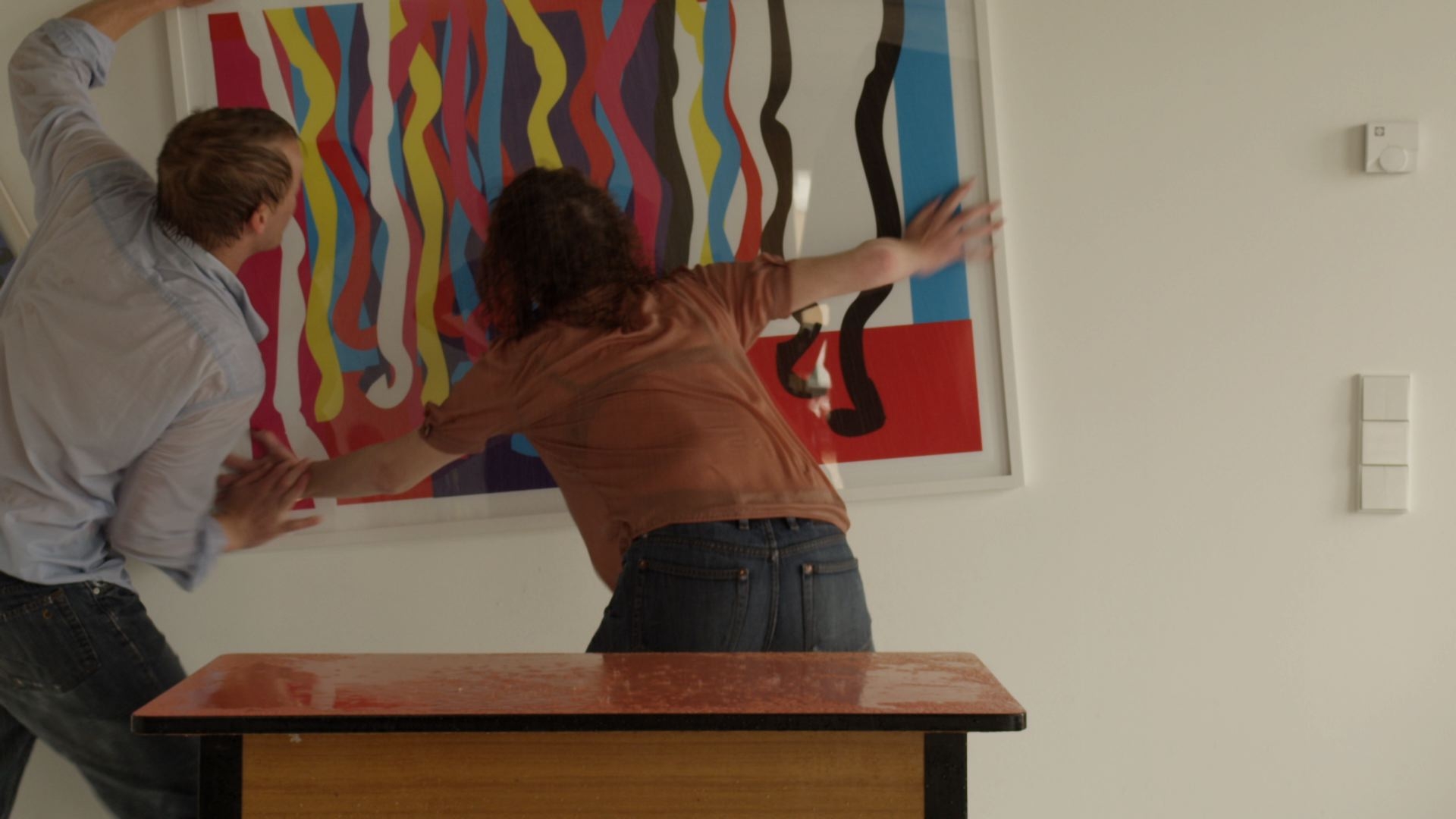Given that the press release for Testing Time, Judith Hopf’s first institutional solo show in the UK, asserts the artist’s interest in ‘how environments shape, influence, and by extension exclude us from ourselves’, it seems odd to find how little consideration was given to the exhibition’s spatial layout. With few relationships forged between three distinctively separate bodies of work sharing a single gallery space, Testing Time relies heavily on contextual references, which sadly are hardly made manifest in the viewing of the work.
A large suspended, fabric-clad black box houses the projection of Lily’s Laptop (all works 2013), a five-minute film that alludes to Le Bateau de Léontine (1911) by Romeo Bosetti. In this short comedy, anglicised as Betty’s Boat, a young bored girl wishes to play with a toy boat. Betty turns on a tap, which eventually overflows, causing havoc to the rest of the building. In Hopf’s version of the film, a teenage Lily, left alone, is eager to play with her parents’ laptop. Frustrated by its protected password, Lily turns to the kitchen tap and floods the apartment by letting the sink overflow. Shots of various objects floating around the room are interwoven with a slapstick scene of the downstairs neighbours struggling to enjoy their dinner, as water gradually ruins the living room. Hilarity ensues, as the drenched couple clamber over furniture, their framed artworks and possessions spouted down a flight of stairs by the ever-raging flood.
Flock of Sheep is a herd of sculptures; modest concrete cubes cast in cardboard boxes, propped up awkwardly on stilted metal legs. Their faces crudely sketched in coal, they stare back deadpan at the viewer. Legs askew, some of the more wonky specimens are balanced on little wooden wedges, while others are taking a rest, placed directly on the floor.
Adjacent are Untitled (Captchas), collages of Hopf’s writings and words triggered by CAPTCHA, which stands for ‘a Completely Automated Public Turing test to tell Computers and Humans Apart’. Commonly used on the websites of such companies as Facebook or Ryanair, their prompts are usually nonsensical and humorous. The resulting combinations of the jabberwockylike and the deliberately poised are Concrete poems passed through a digital filter. Just as French poet Tristan Tzara proposed pulling words from a hat to create poems, so Hopf plucks random, machine-generated gibberish to forge sparse, surreal short texts.
Most surprising in Testing Time is the formal dominance of the black box for Lily’s Laptop, positioned centrally within the gallery, the sound of the gushing water spilling out into the surrounding space. The press release’s emphasis on the film’s critique of modernist architecture and references to feminist materials also seem out of place given the lightness of the Bosetti original, and the very generic interiors used in the film, domestic spaces that could easily be found in any middle-class Danish or German home. It was Hopf’s wonderfully eccentric earlier short film Some Ends of Things (2011) that so much more successfully satirised the rigid geometry of a sombre, modernist glass building by showing a man wearing an egg costume struggling to negotiate crisscrossing walkways, and failing to squeeze through a doorway. In Testing Time, however, whether due to the selection of work or its spatial arrangement, there are few moments where Hopf’s usually acerbic wit is made paramount.
This article was first published in the December 2013 issue.
